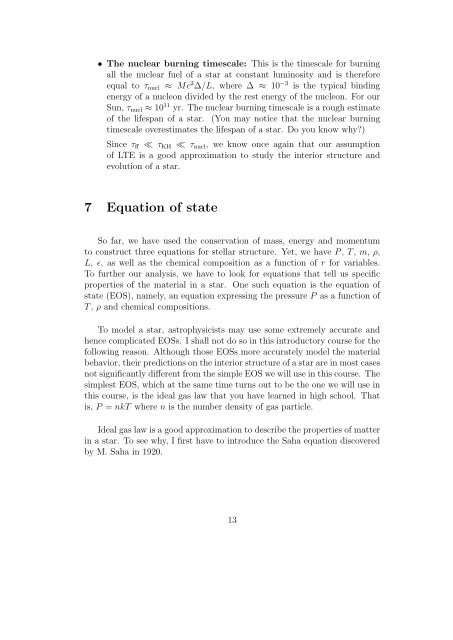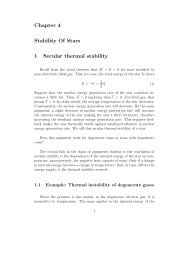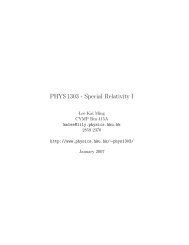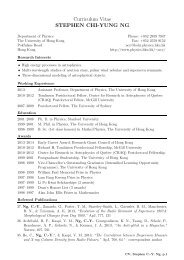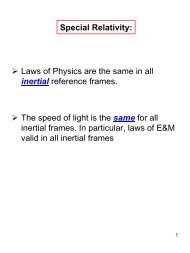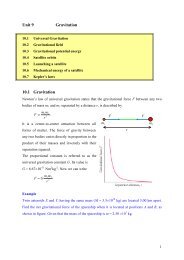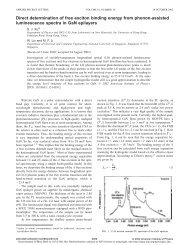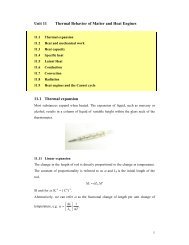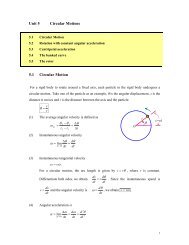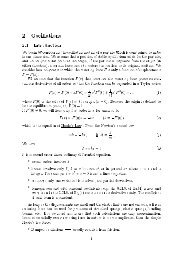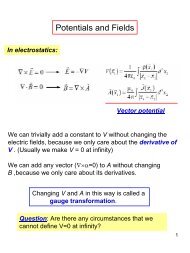Chapter 2 Stellar Structure Equations 1 Mass conservation equation
Chapter 2 Stellar Structure Equations 1 Mass conservation equation
Chapter 2 Stellar Structure Equations 1 Mass conservation equation
Create successful ePaper yourself
Turn your PDF publications into a flip-book with our unique Google optimized e-Paper software.
• The nuclear burning timescale: This is the timescale for burning<br />
all the nuclear fuel of a star at constant luminosity and is therefore<br />
equal to τ nucl ≈ Mc 2 ∆/L, where ∆ ≈ 10 −3 is the typical binding<br />
energy of a nucleon divided by the rest energy of the nucleon. For our<br />
Sun, τ nucl ≈ 10 11 yr. The nuclear burning timescale is a rough estimate<br />
of the lifespan of a star. (You may notice that the nuclear burning<br />
timescale overestimates the lifespan of a star. Do you know why?)<br />
Since τ ff ≪ τ KH ≪ τ nucl , we know once again that our assumption<br />
of LTE is a good approximation to study the interior structure and<br />
evolution of a star.<br />
7 Equation of state<br />
So far, we have used the <strong>conservation</strong> of mass, energy and momentum<br />
to construct three <strong>equation</strong>s for stellar structure. Yet, we have P , T , m, ρ,<br />
L, ϵ, as well as the chemical composition as a function of r for variables.<br />
To further our analysis, we have to look for <strong>equation</strong>s that tell us specific<br />
properties of the material in a star. One such <strong>equation</strong> is the <strong>equation</strong> of<br />
state (EOS), namely, an <strong>equation</strong> expressing the pressure P as a function of<br />
T , ρ and chemical compositions.<br />
To model a star, astrophysicists may use some extremely accurate and<br />
hence complicated EOSs. I shall not do so in this introductory course for the<br />
following reason. Although those EOSs more accurately model the material<br />
behavior, their predictions on the interior structure of a star are in most cases<br />
not significantly different from the simple EOS we will use in this course. The<br />
simplest EOS, which at the same time turns out to be the one we will use in<br />
this course, is the ideal gas law that you have learned in high school. That<br />
is, P = nkT where n is the number density of gas particle.<br />
Ideal gas law is a good approximation to describe the properties of matter<br />
in a star. To see why, I first have to introduce the Saha <strong>equation</strong> discovered<br />
by M. Saha in 1920.<br />
13


